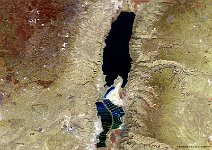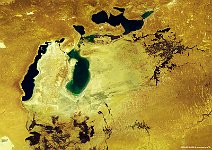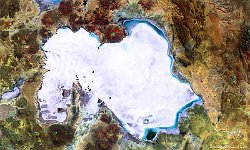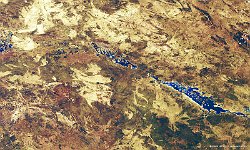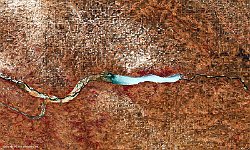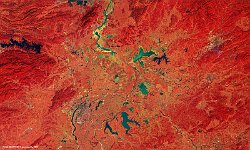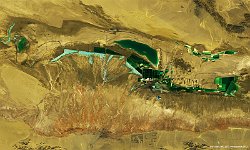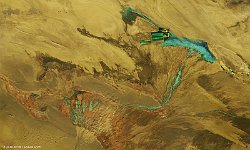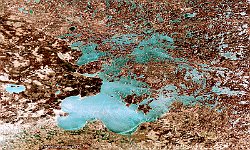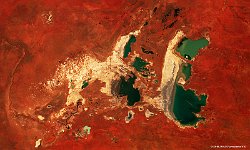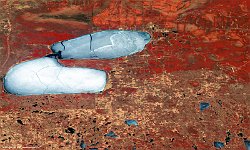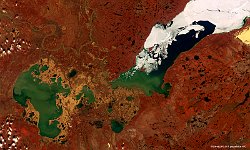7 / 52
Salar de Uyuni, Bolivia
Salar de Uyuni is the world’s largest salt plain with an area of about 10,500 km2.
It is located in southwestern Bolivia at an altitude of 3,650 m and is extremely flat, with average elevation variations within 1 meter over the entire plains area.
The salt plains were formed 42,000 – 30,000 years ago as a result of transformations between several prehistoric lakes. The crusty top layer, which is up to several meters thick, overlays a brine rich in lithium (containing 50 – 70% of the world’s reserves), potassium, and magnesium.
The 100 m false-colour PROBA-V image of 5 April 2017 shows the salt plains of Salar de Uyuni as white taints.
On the plains' western side, some wavy patterns are visible, while the blue colours on the northern and eastern edges indicate flooded areas.
The small rectangular patches in the plains south indicate a large lithium mining area.
Date: 05/04/2017
Resolution: 100m
